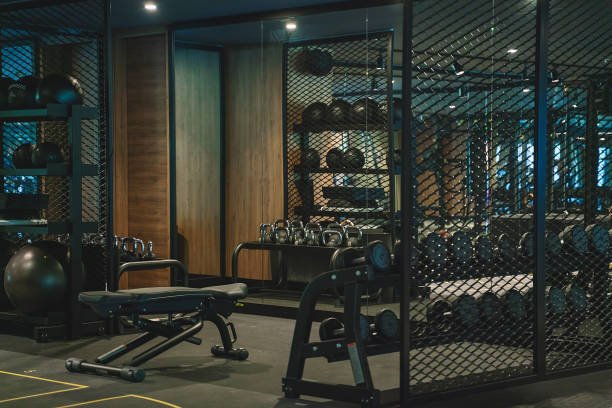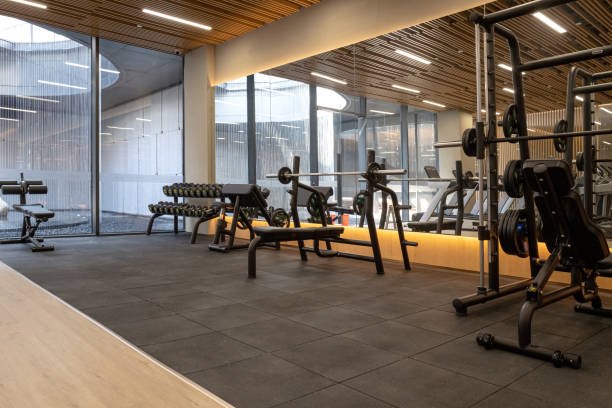In the world of fitness, every detail counts when it comes to maximizing your workout potential. Among the often-overlooked essentials are gym mats, which play a significant role in enhancing both safety and performance during exercise routines. Whether you’re a seasoned gym enthusiast or just starting your fitness journey, incorporating gym mats into your workouts can offer a plethora of benefits. Let’s explore why gym mats are a must-have accessory for any exercise regimen:

- Shock Absorption: Gym mats provide crucial shock absorption, reducing the impact on your joints during high-intensity workouts such as jumping, running, or weightlifting. This cushioning effect helps minimize the risk of injuries, particularly to the knees, ankles, and spine, allowing you to push yourself further without compromising safety.
- Protective Barrier: Hard gym floors can be unforgiving, especially during exercises that involve lying or kneeling. Gym mats act as a protective barrier between your body and the floor, preventing discomfort, bruises, and friction burns. With a supportive surface beneath you, you can focus on perfecting your form and technique without distractions or discomfort.
- Stability and Balance: Maintaining proper balance is essential for executing exercises with precision and control. Gym mats offer a stable foundation, reducing the likelihood of slips and falls, particularly in dynamic movements or challenging yoga poses. Enhanced stability allows you to engage target muscles more effectively, leading to better results and injury prevention.
- Noise Reduction: Dropping weights or performing vigorous movements on hard surfaces can create disruptive noise, disrupting the gym environment and potentially bothering others. Gym mats help dampen sound, providing a quieter workout space that promotes concentration and relaxation. Whether you’re working out at home or in a crowded gym, noise reduction can make your exercise experience more enjoyable for everyone.
- Hygiene and Cleanliness: Sweating is a natural part of any workout, but it can leave behind moisture and bacteria on gym floors, posing hygiene concerns. Gym mats are easy to clean and sanitize, offering a hygienic surface for exercise. By creating a barrier between your body and the floor, mats help minimize direct contact with sweat and germs, promoting a healthier workout environment.
- Versatility and Adaptability: Gym mats come in various sizes, thicknesses, and materials, making them versatile and adaptable to different exercise routines and fitness goals. Whether you’re practicing yoga, performing HIIT circuits, or lifting heavy weights, there’s a gym mat suited to your needs. Portable and lightweight, mats can be easily transported and used in various settings, from home gyms to outdoor spaces.
- Injury Prevention: Above all, using gym mats during exercise significantly reduces the risk of injuries, from minor strains to more severe impact-related incidents. By providing a supportive surface with adequate cushioning and traction, mats help safeguard your body against sudden movements, slips, and falls, allowing you to train with confidence and peace of mind.
Choosing the Right Gym Mats for Your Home Workout Space?
Creating a home workout space is a fantastic way to prioritize fitness and convenience. However, selecting the right gym mats is crucial to ensure a safe, comfortable, and effective exercise environment. With a plethora of options available, it’s essential to consider various factors when choosing gym mats for your home gym. Here’s a comprehensive guide to help you make the best decision:

- Type of Exercise: Consider the type of exercises you’ll be performing in your home gym. If you’re primarily focused on yoga or Pilates, thin and lightweight mats with excellent grip are ideal. For high-impact activities like HIIT workouts or weightlifting, opt for thicker and denser mats that offer superior shock absorption and durability.
- Material: Gym mats come in various materials, each with its unique properties. Common options include rubber, foam, vinyl, and PVC. Rubber mats are durable, provide excellent traction, and offer superior shock absorption, making them ideal for intense workouts. Foam mats are lightweight, affordable, and suitable for low-impact exercises. Consider eco-friendly materials if sustainability is a priority.
- Thickness: The thickness of the gym mats is crucial for impact protection and comfort. Thicker mats (around 1/2 inch to 3/4 inch) are recommended for activities that involve jumping, running, or heavy lifting, as they provide adequate cushioning for joints and bones. Thinner mats (around 1/4 inch) are sufficient for yoga, stretching, and bodyweight exercises.
- Size and Coverage: Measure the available space in your home gym to determine the size and number of mats required. Choose mats that cover the entire workout area, providing ample room for movement and equipment placement. Consider interlocking tiles or larger rolls for seamless coverage and customization options.
- Texture and Grip: Opt for gym mats with textured surfaces or non-slip coatings to enhance grip and stability during exercises. The texture should be comfortable against the skin and prevent slipping, even when sweaty. Test the grip of the mats before purchasing to ensure they meet your needs, especially if you’ll be performing dynamic movements or holding challenging poses.
- Durability and Maintenance: Invest in high-quality gym mats that can withstand frequent use and heavy equipment without deteriorating. Look for mats that are easy to clean and maintain, as hygiene is essential in a home gym environment. Choose materials that resist stains, odors, and moisture for long-lasting durability.
- Portability and Storage: If you have limited space or plan to move your home gym occasionally, opt for lightweight and portable gym mats that are easy to roll up or fold for storage. Consider mats with carrying handles or storage straps for added convenience when transporting or storing them away.
- Budget: Set a budget for your gym mats based on your needs, preferences, and available funds. While quality mats may come with a higher price tag, they offer better performance, durability, and longevity, ultimately providing better value for your investment.
Maintaining Your Gym Flooring:
Maintaining your gym flooring is essential not only for preserving its appearance but also for ensuring a safe and hygienic exercise environment. Whether you have rubber, foam, vinyl, or wood flooring, proper care and maintenance can prolong its lifespan and enhance your overall workout experience. Here are some tips for effectively maintaining your gym flooring:
- Regular Cleaning Routine: Establish a regular cleaning schedule to remove dirt, sweat, and debris from the floor surface. Depending on the type of flooring, sweep or vacuum the area daily to prevent buildup. Use a damp mop with a mild cleaning solution to wipe down the floor weekly or as needed. Avoid harsh chemicals that may damage or discolor the flooring material.
- Prompt Spill Cleanup: Accidents happen, but prompt spill cleanup is crucial to prevent stains and odors on the gym flooring. Immediately wipe up any spills, including water, sweat, or sports drinks, using a clean cloth or mop. For stubborn stains, use a gentle cleaning solution recommended by the flooring manufacturer.
- Protective Measures: Implement preventive measures to protect the gym flooring from damage during workouts. Place mats or rugs beneath heavy equipment to prevent scratching or denting the floor surface. Encourage gym users to wear appropriate footwear or use shoe covers to minimize wear and tear on the flooring material.
- Inspect for Damage: Regularly inspect the gym flooring for signs of damage, such as cracks, tears, or warping. Address any issues promptly to prevent further deterioration and potential safety hazards. For minor damage, consider patching or repairing the affected areas according to the manufacturer’s guidelines.
- Manage Moisture: Moisture can cause mold, mildew, and warping in gym flooring, especially in areas prone to humidity or sweat accumulation. Ensure proper ventilation and airflow in the gym space to reduce moisture levels. Use dehumidifiers or fans as needed to maintain optimal humidity levels and prevent moisture-related issues.
- Avoid Heavy Impact: Minimize heavy impact activities on the gym flooring, as excessive force can cause damage over time. Encourage proper technique and form during workouts to reduce the risk of dropping weights or equipment. Consider using protective mats or pads in high-traffic or high-impact areas to absorb shock and minimize wear.
- Follow Manufacturer’s Guidelines: Refer to the manufacturer’s guidelines and recommendations for cleaning and maintenance specific to your gym flooring material. Follow instructions regarding cleaning products, techniques, and frequency to ensure proper care and prolong the flooring’s lifespan.

Matz and Flooring offers exceptional durability that can withstand the rigors of intense workouts and heavy equipment. These gym mats are designed to absorb impact and reduce the risk of injuries, providing a secure and stable surface for all types of exercises. The non-slip surface ensures maximum grip, allowing you to perform your workouts with confidence and stability. Whether you are setting up a home gym or a commercial fitness facility, Matz and Flooring is the ideal choice to create a safe and functional workout space.

